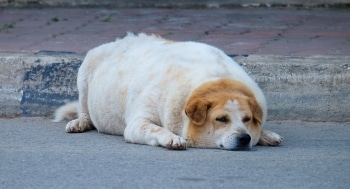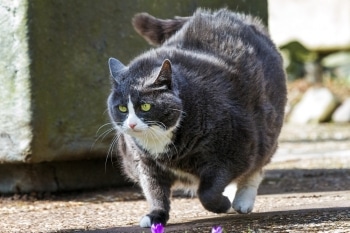Is your dog or cat slowly becoming obese? Here are five simple ways to address that concern.
Garfield the cat is perhaps the most popular obese pet. For many people, he’s cute and adorable. It’s a good thing that Garfield is just a comic character because if he was a real cat, I would have really been concerned with his weight.
You see, obese cats like Garfield are more prone to sugar diabetes. They are also more likely to suffer from various ailments as a result of excess weight. And cats aren’t the only ones who are prone to obesity-related health problems. Dogs, too, are equally at that risk.
Aside from diabetes, some of the health problems that may arise due to obesity are:
- Heat intolerance
- Hypertension
- Respiratory problems
- Liver disease
- Osteoarthritis
- Poor immune system function
- Increased risk of cancer
Obviously, you don’t want your cat or dog to suffer from any of these problems. That’s why you should keep in mind the following ways to prevent obesity in cats:
-
Avoid free feeding
Are you one of those pet owners who simply fill their pet’s bowl with dry food, then leave it out for her to eat? And you just re-fill the bowl when you see it is empty? This is a practice called free feeding.
Sure, free feeding is very convenient for busy pet owners. But it can lead to obesity to pets in the long run.
Instead of free feeding her, measure the right amount of food for your pet. I suggest you work with your veterinarian in determining the appropriate amount of food for your pet. The specialist can also recommend the right type of food and regular meal time for your furry friend.
You can also invest in a food measuring cup or a food scale.
-
Cut back on the treats
Dogs and cats are just like humans. In order to lose weight, we have to cut back on sweets like sodas, ice cream, and cake. The same goes for dogs and cats. Their owners should cut down on the treats given to their cats and dogs. 
Cookies for dogs, for one, are notoriously high in calories. Instead of giving dogs this kind of treats, owners should give them more fruits and vegetables.
The rule of thumb in cat and dog treats is that this should make up only 10 percent of the total calorie that the pet eats.
And don’t fall for the usual “I love my cat/dog so I’m giving her treats” excuse. There are plenty of ways to express your affection for your pet such as playing or cuddling with them.
-
Avoid giving people foods
Many cat owners like to give people foods to their feline friends. Dog owners are also guilty of the same crime. People foods like pizza and lasagna should not be avoided to our pets.
The ideal foods for cats and dogs are formulated to contain vitamins, amino acids, and minerals that these pets require for good health. If you’re looking to give your pet an occasional treat, give her cooked tuna, liver, fish, or chicken. Cats would also appreciate milk every now and then unless your pet is lactose intolerant.
Salty foods like pizza and French fries, raisins, grapes, onion and alcohol are a no-no for pets because these are toxic to them.
-
Learn to read pet food labels
I mentioned earlier that treats should comprise just 10 percent of a pet’s calorie requirements.
But how would you know how much calories your dog or cat is supposed to take in a one day if you don’t read the labels of the pet food you give to him?
It is thus imperative for any pet owner to read the pet food labels, which contain information such as the number of calories in a cup or can.
You can also ask your veterinarian about the ideal amount of calories that your pet should be getting depending on his age or state of health.
-
Encourage physical activity
Finally, one surefire way to ensure that cats and dogs will be able to maintain their ideal weight is to get them moving. Pet owners should make it a habit of bringing their dogs outside for a walk. 
Cat owners, on the other hand, should have enough toys so that their cats can play with them. Investing in a cat tower is also a good idea.
Conclusion
Pet obesity is a serious health concern that most pet owners tend to overlook. Some even think that extra pounds make their pets more adorable. But obesity can expose cats and dogs to a lot of health problems later on in their lives.
So I suggest you start to encourage your pets to be more active. You should also minimize their treats. And be more conscious of the foods you’re giving to them.
All these actions can help prevent obesity in pets.





